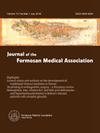利用闭环刺激改善时相失调患者的肺功能容量:随机交叉研究
IF 2.6
3区 医学
Q1 MEDICINE, GENERAL & INTERNAL
引用次数: 0
摘要
背景:由于心率反应受损,慢性心律失常(CI)严重限制了运动耐量。本研究探讨了带闭环刺激(DDD-CLS)起搏的心脏起搏器与不带 CLS 起搏的心脏起搏器相比,能否提高 CI 患者的肺功能和心肺能力:这项随机交叉试验包括 32 名 CI 患者,他们在两个月内分别接受 CLS 和 DDD 起搏。采用肺活量测定法评估强迫生命容量(FVC)。循环心肺运动测试(CPET)测量峰值摄氧量(峰值 VO2):结果:DDD-CLS 起搏的 FVC(2.2 ± 0.8 L)明显高于 DDD 起搏(2.0 ± 0.7 L),P = 0.036,提高了 3.2%。此外,采用 DDD-CLS 模式的患者的 FEV1 为 1.8 ± 0.6 L,明显高于 DDD 模式的 1.7 ± 0.5 L(p = 0.03)。与 DDD 起搏相比,DDD-CLS 起搏也能获得更高的峰值 VO2(14.9 ± 4.0 vs 12.2 ± 3.7 mlO2/kg/min,p 2 和 CPET 期间峰值 VO2 与峰值心率之间的关系):结论:与 DDD 模式相比,DDD-CLS 起搏可提供生理时变支持,改善 CI 患者用力时的心肺功能,从而提高肺活量。本文章由计算机程序翻译,如有差异,请以英文原文为准。
Improving lung function capacity in patients with chronotropic incompetence using closed loop stimulation: A randomized crossover study
Background
Chronotropic incompetence (CI) severely limits exercise tolerance due to impaired heart rate responses. This study investigated whether pacemaker with closed-loop stimulation (DDD-CLS) pacing, which provides rate acceleration in response to exertion, could enhance lung function and cardiopulmonary capacity compared pacemaker without CLS pacing in patients with CI.
Methods
This randomized crossover trial included 32 patients with CI who were compared to each CLS and DDD pacing over 2 months. Spirometry was used to assess the forced vital capacity (FVC). Cycling-based cardiopulmonary exercise testing (CPET) measured peak oxygen uptake (peak VO2).
Results
DDD-CLS pacing yielded significantly higher FVC (2.2 ± 0.8 L) versus DDD pacing (2.0 ± 0.7 L), p = 0.036, a 3.2% improvement. Moreover, those in the DDD-CLS mode showed a significantly higher FEV1 of 1.8 ± 0.6 L compared to the DDD mode of 1.7 ± 0.5 L (p = 0.03). Compared with DDD pacing, DDD-CLS pacing also achieved superior peak VO2 (14.9 ± 4.0 vs 12.2 ± 3.7 mlO2/kg/min, p < 0.001) and peak heart rate (106.9 ± 9.7 vs 98.3 ± 19.8 bpm, p = 0.013). DDD-CLS and DDD pacing modes showed significant correlations between FVC and peak VO2 and between peak VO2 and peak heart rate during CPET.
Conclusions
Compared with DDD mode, DDD-CLS pacing provided physiological chronotropic support to improve cardiopulmonary function during exertion, which enhanced lung capacity in patients with CI.
求助全文
通过发布文献求助,成功后即可免费获取论文全文。
去求助
来源期刊
CiteScore
6.50
自引率
6.20%
发文量
381
审稿时长
57 days
期刊介绍:
Journal of the Formosan Medical Association (JFMA), published continuously since 1902, is an open access international general medical journal of the Formosan Medical Association based in Taipei, Taiwan. It is indexed in Current Contents/ Clinical Medicine, Medline, ciSearch, CAB Abstracts, Embase, SIIC Data Bases, Research Alert, BIOSIS, Biological Abstracts, Scopus and ScienceDirect.
As a general medical journal, research related to clinical practice and research in all fields of medicine and related disciplines are considered for publication. Article types considered include perspectives, reviews, original papers, case reports, brief communications, correspondence and letters to the editor.

 求助内容:
求助内容: 应助结果提醒方式:
应助结果提醒方式:


